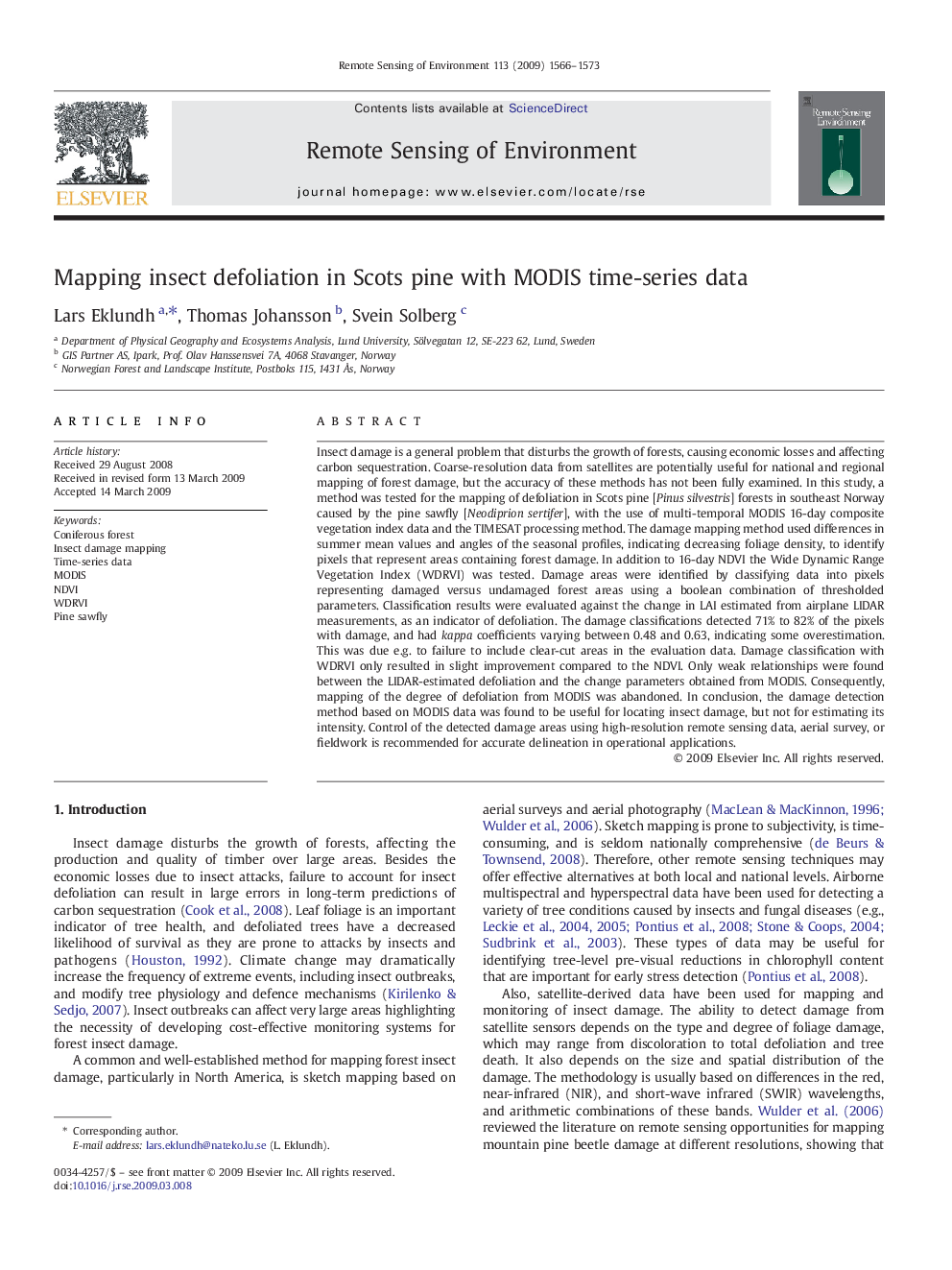| کد مقاله | کد نشریه | سال انتشار | مقاله انگلیسی | نسخه تمام متن |
|---|---|---|---|---|
| 4460133 | 1621314 | 2009 | 8 صفحه PDF | دانلود رایگان |

Insect damage is a general problem that disturbs the growth of forests, causing economic losses and affecting carbon sequestration. Coarse-resolution data from satellites are potentially useful for national and regional mapping of forest damage, but the accuracy of these methods has not been fully examined. In this study, a method was tested for the mapping of defoliation in Scots pine [Pinus silvestris] forests in southeast Norway caused by the pine sawfly [Neodiprion sertifer], with the use of multi-temporal MODIS 16-day composite vegetation index data and the TIMESAT processing method. The damage mapping method used differences in summer mean values and angles of the seasonal profiles, indicating decreasing foliage density, to identify pixels that represent areas containing forest damage. In addition to 16-day NDVI the Wide Dynamic Range Vegetation Index (WDRVI) was tested. Damage areas were identified by classifying data into pixels representing damaged versus undamaged forest areas using a boolean combination of thresholded parameters. Classification results were evaluated against the change in LAI estimated from airplane LIDAR measurements, as an indicator of defoliation. The damage classifications detected 71% to 82% of the pixels with damage, and had kappa coefficients varying between 0.48 and 0.63, indicating some overestimation. This was due e.g. to failure to include clear-cut areas in the evaluation data. Damage classification with WDRVI only resulted in slight improvement compared to the NDVI. Only weak relationships were found between the LIDAR-estimated defoliation and the change parameters obtained from MODIS. Consequently, mapping of the degree of defoliation from MODIS was abandoned. In conclusion, the damage detection method based on MODIS data was found to be useful for locating insect damage, but not for estimating its intensity. Control of the detected damage areas using high-resolution remote sensing data, aerial survey, or fieldwork is recommended for accurate delineation in operational applications.
Journal: Remote Sensing of Environment - Volume 113, Issue 7, 15 July 2009, Pages 1566–1573